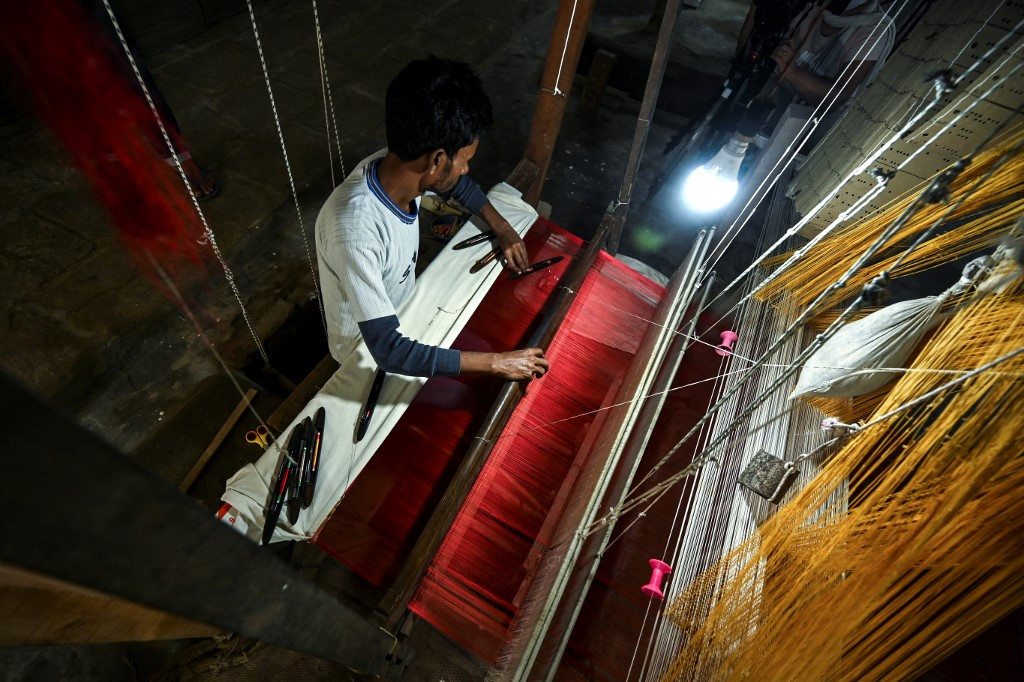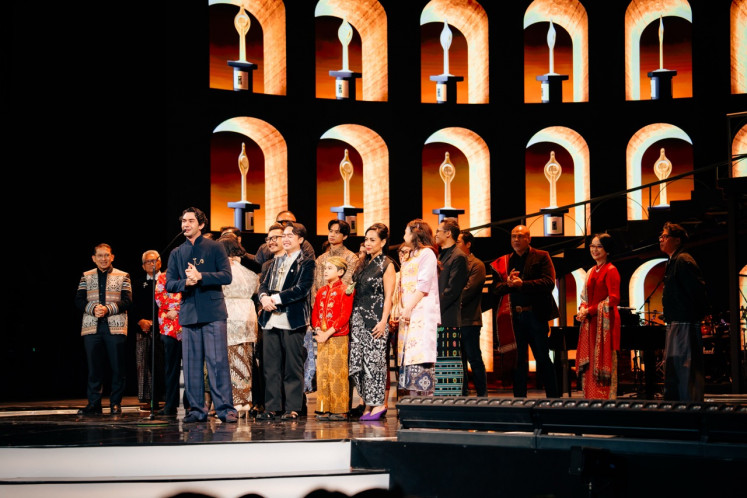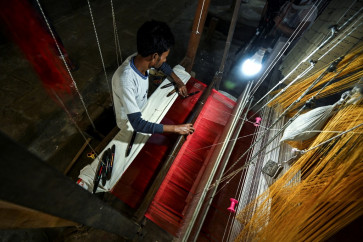Popular Reads
Top Results
Can't find what you're looking for?
View all search resultsPopular Reads
Top Results
Can't find what you're looking for?
View all search resultsIndian sari weavers toil to keep tradition alive
Mohammad Sirajuddin's cramped studio is typical of Varanasi, Uttar Pradesh, India's dwindling community of artisans painstakingly working by hand to produce silk saris, uniquely cherished among their wearers as the epitome of traditional Indian sartorial style.
Change text size
Gift Premium Articles
to Anyone
I
n a dim room near the banks of India's Ganges River, arms glide over a creaking loom as another silken fiber is guided into place with the rhythmic clack of a wooden beam.
Mohammad Sirajuddin's cramped studio is typical of Varanasi, Uttar Pradesh, India's dwindling community of artisans painstakingly working by hand to produce silk saris, uniquely cherished among their wearers as the epitome of traditional Indian sartorial style.
The city he calls home is revered among devout Hindus, who believe that cremation on the banks of its sacred waterway offers the chance to escape the infinite cycle of death and rebirth.
But Sirajuddin's own reflections on mortality are centered on his craft, with competition from more cost-efficient mechanized alternatives and cheap imports from China leaving his livelihood hanging by a thread.
"If you walk around this whole neighborhood, you'll see that this is the only house with a handloom," the 65-year-old said.
"Even this will be here only as long as I am alive. After that, nobody in this house will continue."
Varanasi's hand-weavers have cultivated a reputation for excellence over centuries, specializing in intricate patterns, floral designs and radiant golden brocades.


















